Mysterious 8,000-Year-Old Petroglyphs Of Unknown Beings Of Sego Canyon, Utah
Jan Bartek - AncientPages.com - The petroglyphs of Sego Canyon in Utah look like beings we see in science fiction movies, but these figures are not modern inventions. These carvings were made thousands of years ago, and their alien-like appearance makes many people wonder what their creators saw or thought back then.
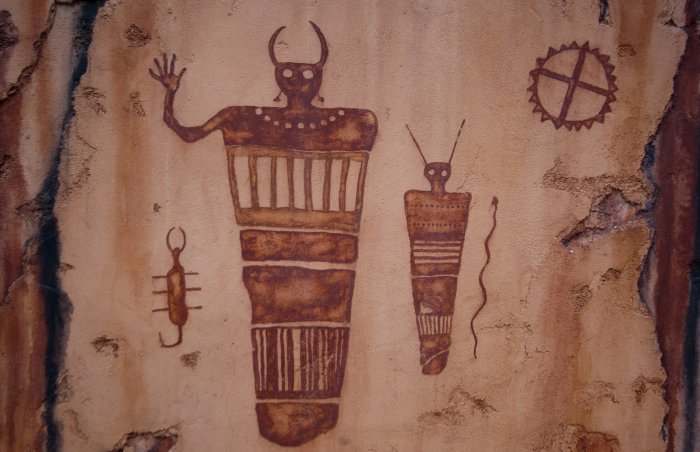
Utah's petroglyphs are thousands of years old. Credit: Patrick J. Wall/Danita Delimont - Adobe Stock
The study of petroglyphs is important because rock art offers a unique opportunity to look through the eyes of ancient people. By examining ancient rock art, we can better understand how people understood the world, and these images often had deep cultural and religious significance for the societies that created them.
Sometimes, petroglyphs can be easily deciphered, and archaeologists can determine if the ancient depictions served as astronomical markers, communication symbols, or even some form of writing. Several petroglyphs have baffled scientists because the beings carved on walls simply do not resemble humans.
Some of the most unusual and mysterious petroglyphs can be found in Utah. Located north of Thompson Springs, Sego Canyon, also known as Book Cliffs and Thompson Wash, has a rich history, and here we can admire rock art from the Archaic period.
Life-Sized Beings Carved On The Walls In Sego Canyon
The sandstone cliffs of Sego Canyon are covered with very unusual petroglyphs, and many who favor more controversial explanations suggest these are depictions of aliens whose ancestors witnessed. Many mainstream scientists suggest these odd, almost ghost-like beings carved on the canyon’s walls were carved by spiritual leaders, such as shamans, in an altered state of consciousness, perhaps induced by the use of natural hallucinogens.
The petroglyphs of Sego Canyon go back to three different periods and cultures, from 6,000 B.C. to 1,880 A.C.
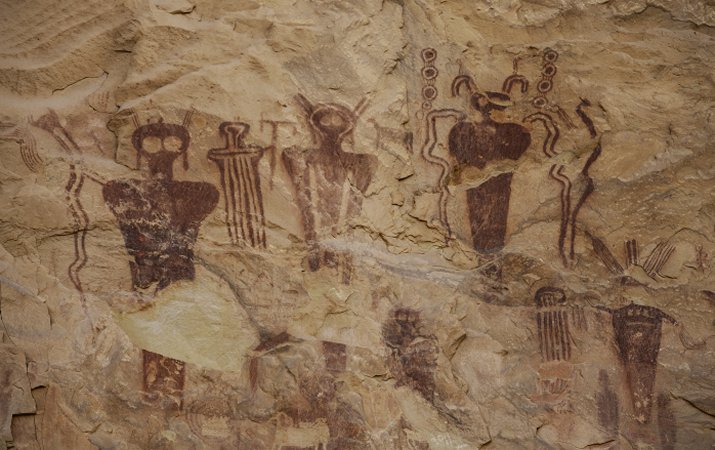
The ancient figures are often without arms and have very large eyes. Credit: RLW - Adobe Stock
What did Native Americans think when they produced rock art of larger-than-life-size anthropomorphic (manlike) forms with no eyes, arms, or legs? Other depicted figures have bug eyes, antennae, earrings, snakes in hand, and leg-less torsos. They are remarkable, aren’t they?
Some of the petroglyphs were created by the Fremont Indians, who thrived from about A.D. 600 to A.D.1250, contemporary with the Anasazi Culture of the Four Corners area.
As discussed on Ancient Pages before, the Fremont Indians lived often in rugged places, but they knew how to adapt to the environment. They were closely tied to nature and its changes, which means they had to be very flexible and adaptive to quickly modify their way of life.
Fremont pictographs and petroglyphs are famous. They depict trapezoidal figures with arms, legs, and fingers and are decorated with headdresses and necklaces; there are also animal-like figures such as deer, dogs, bighorn sheep, birds, snakes, and lizards.
The Fremont Indians also produced curious small clay people figurines that were decorated with necklaces, ear bobs, necklaces, clothing, and hair.
The purpose of these figurines is still unknown, but it has been suggested the artifacts may have been associated with fertility or religious rituals of the Fremont people.
Can Some Petroglyphs In Utah Depict The Kachinas?
There is an interesting connection between the Anasazi cliff dwellers and the Hopi. The Anasazi attained a high level of culture for their time and then abandoned it all. They also occupied the valleys and plains in the “Four Corners” region of North America and they built great cities and ceremonial centers with kivas, special sacred buildings. The kivas are also associated with the Pueblo and Hopi tribes, connected with their belief in the Kachina spirits. The hatchway was symbolic of the gateway between our world and the “fourth world,” the realm of the spirits.
In another article, Ancient Pages explained how the Hopi perceived the Kachinas. “According to the Hopi, the Kachinas were no gods but could be described as watchers. The gods sent them, and their mission was to teach, defend, and watch over the Hopi.
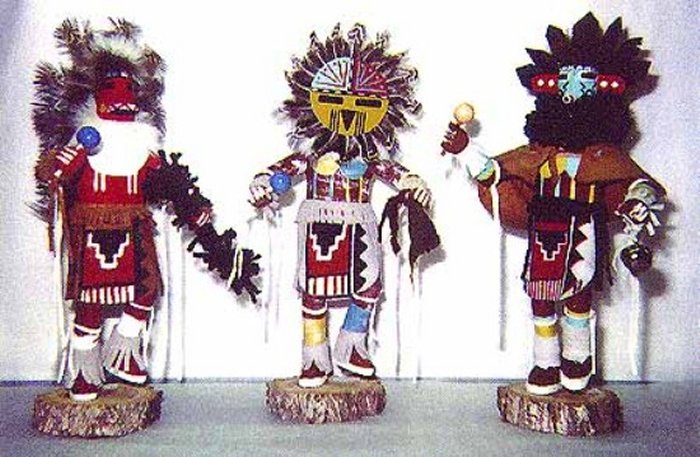
Kachina dolls.
The Kachinas were real physical beings of flesh and blood and looked just like ordinary humans. They came from a distant planet, the Hopi, called Tóonáotakha, located outside our solar system.
The Kachinas used flying vehicles to move around on Earth or when they traveled back to their home planet.
These flying machines had different sizes and names. One of them was called "Páatoówa ".
This object was used to fly above the water. Furthermore, their crafts were extremely fast, and the Kachinas could conquer immense distances in space in only a few seconds.”
Can some of the petroglyphs in Sego Canyon be depictions of the Kachinas?
Target Of Vandalism - Sego Canyon's Petroglyphs Must Be Respected And Preserved
The rock art of Sego Canyon is a true wonder, and it raises many questions about our ancient past, but sadly, these magnificent petroglyphs have been a target of vandalism.
This ancient site is on the National Register of Historic Places, and the Antiquities Act of 1906 and the Archaeological Resources Protection Act provide serious penalties for vandals.
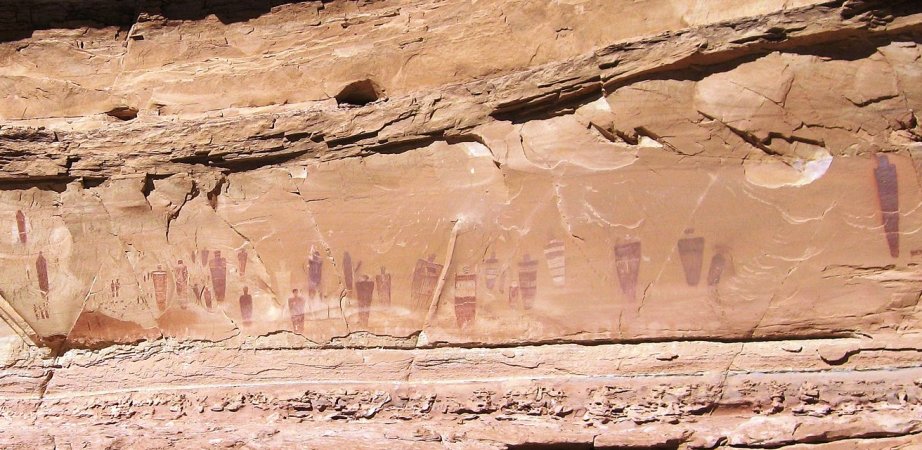
The Great Gallery, an extensive panel in the Barrier Canyon Style in Canyonlands National Park. Credit: Surfsupusa - CC BY 3.0
It’s important to remember this is a historical site, no matter what we may think about these mysterious carvings. Whether we think they are ancient aliens, ghosts, spirits, or fantasies of shamans, the fact remains these petroglyphs are a legacy of our ancestors. We should do whatever it takes to preserve the rock art of Sego Canyon.
Anyone with the privilege of visiting this remarkable place should show respect so future generations can also admire these astonishing petroglyphs and think about them as we do today.
Updated on January 21, 2024
Written by Jan Bartek - AncientPages.com Staff Writer
Copyright © AncientPages.com All rights reserved. This material may not be published, broadcast, rewritten or redistributed in whole or part without the express written permission of AncientPages.com
More From Ancient Pages
-
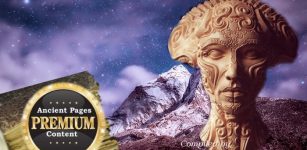 Secret High-Tech Knowledge Hidden In Ancient Manuscripts And The Mysterious Seven Sky Kings
News | Aug 24, 2021
Secret High-Tech Knowledge Hidden In Ancient Manuscripts And The Mysterious Seven Sky Kings
News | Aug 24, 2021 -
 Cynane: Talented Female Military Leader Assassinated While Giving A Speech
Featured Stories | Mar 5, 2019
Cynane: Talented Female Military Leader Assassinated While Giving A Speech
Featured Stories | Mar 5, 2019 -
 On This Day In History: HMS Challenger Begins Scientific Exploration Of Oceans – On Dec 21, 1872
News | Dec 21, 2016
On This Day In History: HMS Challenger Begins Scientific Exploration Of Oceans – On Dec 21, 1872
News | Dec 21, 2016 -
 New Chemical Reactions To Generate Building Blocks Of Proteins And DNA – Discovered
DNA | Jul 29, 2022
New Chemical Reactions To Generate Building Blocks Of Proteins And DNA – Discovered
DNA | Jul 29, 2022 -
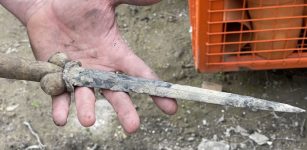 Medieval Bollock Dagger – Also Known As Kidney Dagger Discovered In Belgium
Archaeology | Mar 30, 2022
Medieval Bollock Dagger – Also Known As Kidney Dagger Discovered In Belgium
Archaeology | Mar 30, 2022 -
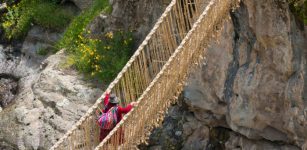 Keshwa Chaca – Last Suspension Rope Bridge Of Inca People
Ancient Traditions And Customs | Apr 17, 2019
Keshwa Chaca – Last Suspension Rope Bridge Of Inca People
Ancient Traditions And Customs | Apr 17, 2019 -
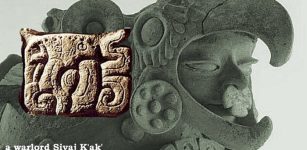 On This Day In History: Powerful Warlord And Emissary Of Spear-Thrower-Owl Arrived At Tikal – On Jan 8, 378 AD
News | Jan 8, 2017
On This Day In History: Powerful Warlord And Emissary Of Spear-Thrower-Owl Arrived At Tikal – On Jan 8, 378 AD
News | Jan 8, 2017 -
 Sole Survivor Recalls An Incredible Unexplained Mountain Mystery
Featured Stories | Aug 7, 2023
Sole Survivor Recalls An Incredible Unexplained Mountain Mystery
Featured Stories | Aug 7, 2023 -
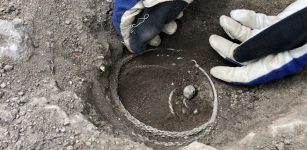 Wonderful And Unique Viking Silver Treasure Uncovered In Täby In Stockholm, Sweden
Archaeology | Nov 29, 2022
Wonderful And Unique Viking Silver Treasure Uncovered In Täby In Stockholm, Sweden
Archaeology | Nov 29, 2022 -
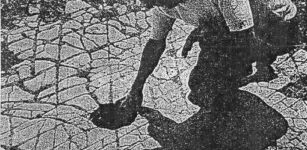 Oklahoma’s Ancient Mosaic Floor With Mysterious ‘Post Holes’ Could Re-Write History Of North America
Civilizations | Aug 10, 2018
Oklahoma’s Ancient Mosaic Floor With Mysterious ‘Post Holes’ Could Re-Write History Of North America
Civilizations | Aug 10, 2018 -
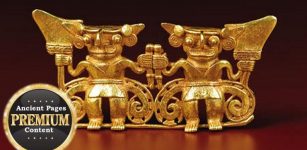 Bolivia And The Mystery Of The Twins Of Atlantis
Featured Stories | Nov 16, 2014
Bolivia And The Mystery Of The Twins Of Atlantis
Featured Stories | Nov 16, 2014 -
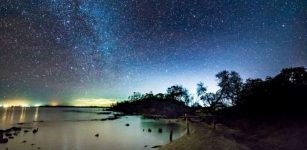 Aboriginal Australians Were World’s First Astronomers Who Discovered Variable Stars – Astrophysicist Says
Archaeology | Jul 16, 2019
Aboriginal Australians Were World’s First Astronomers Who Discovered Variable Stars – Astrophysicist Says
Archaeology | Jul 16, 2019 -
 Danger Lurking In The Woods – Strange And Unexplained Sightings – Part 2
Featured Stories | Jul 7, 2018
Danger Lurking In The Woods – Strange And Unexplained Sightings – Part 2
Featured Stories | Jul 7, 2018 -
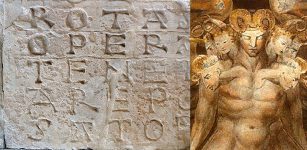 Sator Square: Mysterious Ancient Magical Word Puzzle Remains Unsolved
Ancient Symbols | Apr 18, 2018
Sator Square: Mysterious Ancient Magical Word Puzzle Remains Unsolved
Ancient Symbols | Apr 18, 2018 -
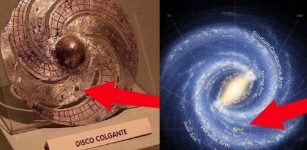 Mysterious 2,000-Year-Old Disco Colgante – Unknown High-Tech Device, Representation Of A Spiral Galaxy Or Something Else?
Artifacts | Nov 20, 2020
Mysterious 2,000-Year-Old Disco Colgante – Unknown High-Tech Device, Representation Of A Spiral Galaxy Or Something Else?
Artifacts | Nov 20, 2020 -
 Connection Between Viruses And Ancestors Of All Complex Life Has Been Found
Archaeology | Jul 1, 2022
Connection Between Viruses And Ancestors Of All Complex Life Has Been Found
Archaeology | Jul 1, 2022 -
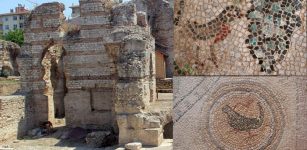 Beautiful Zeugma-Like Mosaics Unearthed In Sinop Province, Northern Turkey
Archaeology | Oct 17, 2020
Beautiful Zeugma-Like Mosaics Unearthed In Sinop Province, Northern Turkey
Archaeology | Oct 17, 2020 -
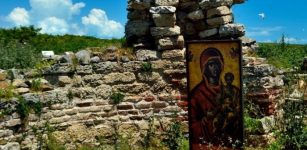 A 1,500-Year-Old Holy Well Probably With Healing Water – Discovered In Bulgaria
Archaeology | Nov 25, 2020
A 1,500-Year-Old Holy Well Probably With Healing Water – Discovered In Bulgaria
Archaeology | Nov 25, 2020 -
 Nerva: ‘Pater Patriae’ – Aging Roman Emperor Who Succeeded In Time Of Crisis
Featured Stories | Jan 3, 2020
Nerva: ‘Pater Patriae’ – Aging Roman Emperor Who Succeeded In Time Of Crisis
Featured Stories | Jan 3, 2020 -
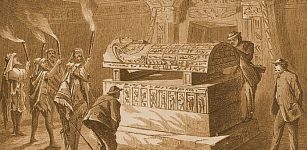 Before The Pharaohs: The Evidence For Advanced Civilization In Egypt’s Mysterious Prehistory
Civilizations | Apr 14, 2017
Before The Pharaohs: The Evidence For Advanced Civilization In Egypt’s Mysterious Prehistory
Civilizations | Apr 14, 2017
